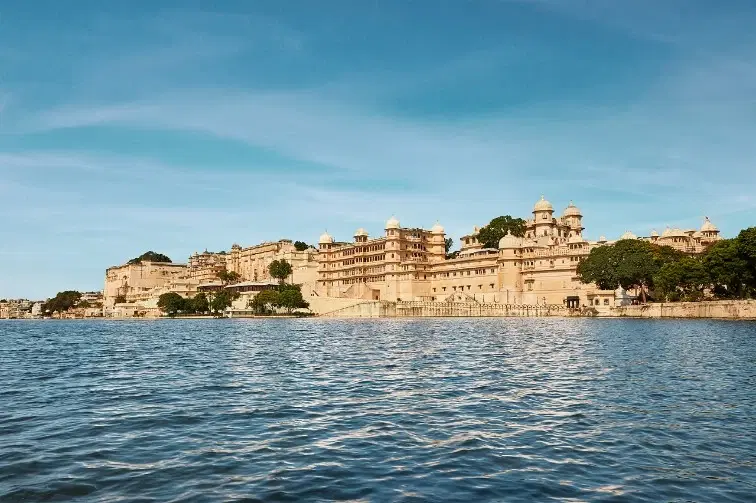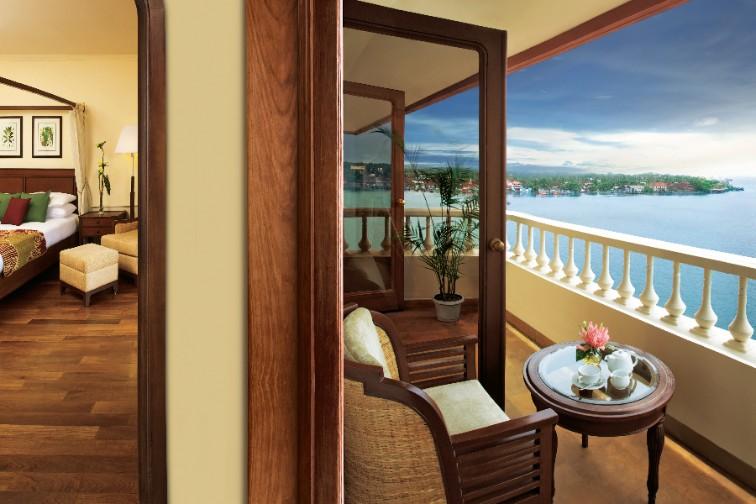
Hotels
•03 min read

Rana Kumbha Palace is a magnificent landmark found within the impressive Chittorgarh fort complex. Its charm and strength speak of a glorious past. In this post, we explore the palace's rich history, architecture, and its connection to the Mewar dynasty. Readers will discover the beauty of ancient Indian architecture and learn why this palace remains one of the most celebrated heritage sites in Chittorgarh.
Rana Kumbha Palace is a historic gem nestled within the walls of the Chittorgarh fort complex. It is a symbol of perseverance and a reminder of the glorious era of the Mewar dynasty. This palace is part of a larger story that has shaped the legacy of Rajasthan's cultural and historical landscape.
Located in the heart of the Chittorgarh fort complex, the palace is one of the most important historical palaces in Rajasthan. Its walls, courtyards, and secret chambers hold tales of valor and strategic brilliance. Tourists and history enthusiasts find the palace a delightful destination, offering a peek into a time when art and architecture mingled with power and prosperity.
Rana Kumbha was a prominent ruler of the Mewar dynasty. His reign is remembered for an era rich in art, firm defenses, and strategic campaigns. He contributed significantly to the cultural landscape by promoting arts and making architectural excellence a priority.
He is celebrated for constructing structures that stand to this day. Among his best-known architectural commissions is the Vijay Stambh, the Tower of Victory, which is filled with elegance and strength. The palace also reflects the famous Rana Kumbha legacy with its detailed carvings and intricately designed spaces that remain a marvel of the past.
The palace presents a striking blend of the Kumbhalgarh architecture style. This style combines the traditional Rajput flair with hints of Mughal refinement. Visitors are drawn to the graceful arches and beautiful courtyards that invite both awe and admiration.
Inside the palace, you will find secret underground chambers. These halls allowed for safe passage during times of conflict. The simple yet detailed designs speak of a time when ancient Indian architecture was at its best. The structure laid the groundwork for many forts and palaces of India that followed, each echoing the rich traditions of the past.

The palace is a testament to creativity and strategic vision. Its design and hidden corners illustrate just how advanced the engineering of the time could be. Even today, the striking symmetry and beauty stand as a reminder of a powerful and innovative era.
Rana Kumbha Palace played a vital role in the history of the state. It was not just a residence, but a center for military strategy and governance. The palace was where important decisions were made that shaped the future of the Mewar dynasty.
The cultural influence of the palace extends beyond its walls. It is one of the top Rajasthan tourism attractions today. The vibrant tales and legends that surround the palace enrich the cultural fabric of the region. Tour guides often share stories of the palace, including one of the most famous: the haunted story of Rana Kumbha Palace. Such stories add an element of mystery that continues to captivate visitors.
Insight Corner: The Hidden Tunnels of Rana Kumbha Palace
Did you know that Rana Kumbha Palace is famous for its underground tunnels? These tunnels were built as escape routes during sieges and stand as a testament to the ingenious military strategies of the Mewar dynasty.
Visitors to the palace can step back in time and experience the elegance and mystery of the past. Rana Kumbha Palace welcomes guests daily from 9:00 AM to 6:00 PM. The ticket prices differ for domestic and international visitors. This important site is a key part of heritage sites in Chittorgarh and adds to the allure of exploring ancient Indian architecture.
The palace is ideally located near other must-visit attractions. From the palace, you can also see Padmini’s Palace and the impressive Vijay Stambh. These landmarks offer a well-rounded picture of the Mewar dynasty palaces and provide an enriching experience for tourists seeking to understand India’s regal past. The convergence of these historical sites makes a visit to the Chittorgarh fort complex truly memorable.

Rana Kumbha Palace was built in the 15th century by Rana Kumbha, a revered ruler of the Mewar dynasty. It served as both an administrative hub and a royal residence.
Rana Kumbha is known for constructing the Kumbhalgarh Fort, which stands as a UNESCO World Heritage Site with its massive walls and strategic design.
The famous Vijay Stambh was commissioned by Rana Kumbha to celebrate his victory over his foes, embodying the spirit of triumph.
No, Rana Kumbha is remembered for his victories over Mahmud Khilji. His achievements focused on defending and strengthening Mewar.
Ticket prices vary for domestic and international tourists. The palace is open daily from 9:00 AM to 6:00 PM.
Rana Kumbha Palace stands as a towering symbol of the Mewar dynasty’s past. Its beautiful architecture and secret passages tell powerful stories of artistry and strategy. A visit to this palace offers rich insights into ancient Indian architecture and the vast legacy of Rana Kumbha. Travelers can immerse themselves in the rich history wrapped in the walls of this heritage site. There is a quiet magic in exploring these living monuments that inspires both awe and reflection.